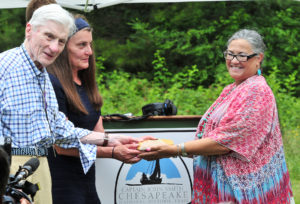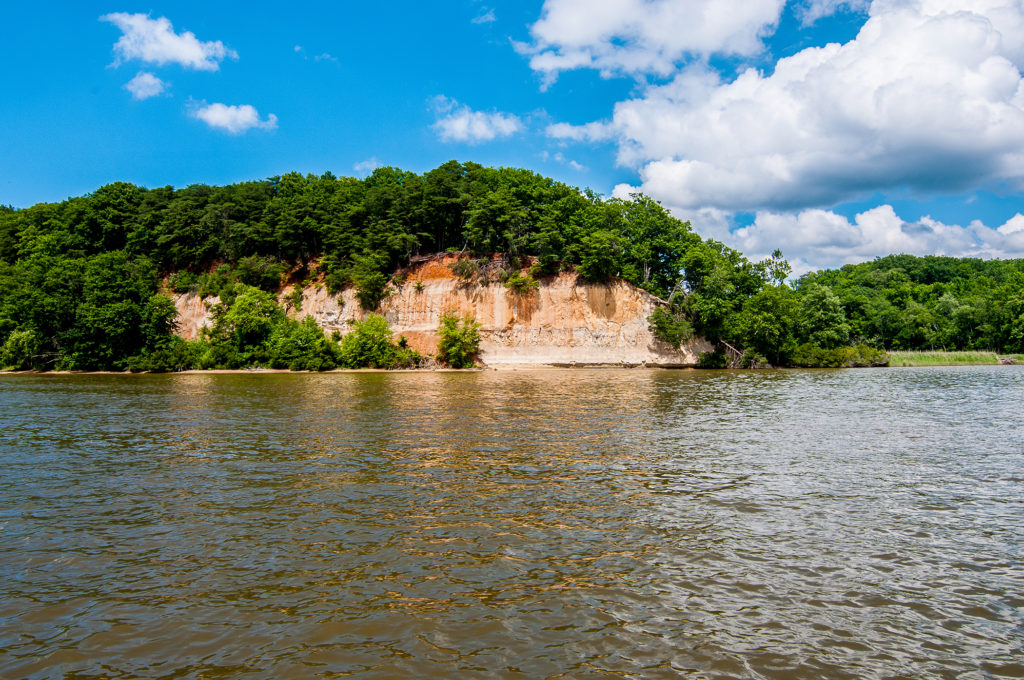By Jody Couser, Director of Communications of the Chesapeake Conservancy

Senator John Warner and his daughter, Ms. Virginia Warner, offer Chief Anne Richardson of the Rappahannock Tribe a piece of Fones Cliffs as a symbol of the transfer of the property.
(Photo courtesy Peter Turcik)
The Chesapeake Conservancy joined members of the Rappahannock Tribe, the National Park Service Chesapeake Bay Office, retired U.S. Senator John Warner, and his daughter Ms. Virginia Warner to celebrate a donation of land to the Rappahannock Tribe on a beautiful sunny day in June.
Working with the Chesapeake Conservancy, Ms. Warner donated to the tribe nearly an acre of land on Carters Wharf Road in Warsaw, Virginia, which is located near a public boat landing at Fones Cliffs along the Rappahannock River.
The tribe will use this land as a staging area for its Return to the River program, an effort to engage tribal youth in the traditions of their ancestors that were practiced there for thousands of years and in traditional water-related activities, such as canoeing, fishing, and camping. The Chesapeake Conservancy also donated a canoe to the tribe for this program.
This parcel of land allows the Rappahannock Tribe to access the Captain John Smith Chesapeake National Historic Trail, which is within walking distance of the Carters Wharf Landing public access site. The property is located just behind Fones Cliff, an area of cultural significance for the trail.
According to the journals of Captain John Smith, Fones Cliffs on the Rappahannock was the home of three American Indian towns and bore witness to an encounter between the Rappahannock Tribe and the Englishmen aboard Smith’s shallop. The area remains in pristine condition, but is currently threatened by development.
“This is a momentous day for the Rappahannock Tribe. We are very grateful to Ms. Virginia Warner and the Chesapeake Conservancy for making this possible. This land donation is deeply meaningful for our Return to the River program and will have far reaching impacts for our tribe for generations to come,” Chief Anne Richardson said.
Unless otherwise indicated, all material in Pathways Across America is public domain. All views expressed herein are perspectives of individuals working on behalf of the National Trails System and do not necessarily represent the viewpoint of the Federal agencies.
